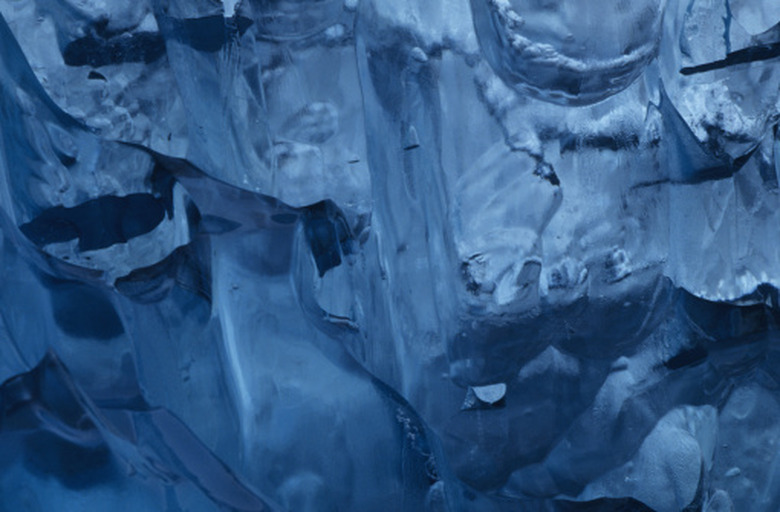The Difference Between Glacier Ice & Sea Pack Ice
At first glance, ice seems to be a rather uniform substance. However, depending on where and how it was formed, bodies of ice can differ vastly. Glaciers, usually formed high in mountainous regions within the Arctic Circle, form enormous, advancing masses of ice that exert impressive force despite their generally slow pace. In contrast, sea pack ice forms at sea, often creating sheets of solid ice that can be used effectively as land bridges for humans and animals.
Formation of Sea Pack Ice
Formation of Sea Pack Ice
Sea ice forms when water on the surface of the ocean drops to or below the freezing point. The freezing point of saline water is slightly lower than that of fresh water — about 29 degrees Fahrenheit compared to 32 degrees F for fresh water — and, therefore, sea pack ice requires a lower temperature to form than does glacial ice.
Formation of Glacial Ice
Formation of Glacial Ice
Glacial ice is composed entirely of fresh water and develops in places where the temperature rarely exceeds 32 degrees F and snows accumulate in layers. Over time, some of the accumulated snow may briefly melt and then refreeze, turning into small and compact ice crystals known as firn. As more snow falls and accumulates, the firn underneath compacts into a sheet of ice, which will slowly begin to move as the layers thicken and the pressure above increases.
Function of Sea Pack Ice
Function of Sea Pack Ice
One primary function of sea pack ice is its role in the ocean circulation process. The formation of sea pack ice expels salt from the water that freezes. This salt sinks into the sea water below, making this water saltier and denser, causing it to sink lower. This process forms part of the "great conveyor belt," which helps to keep the oceans circulating and prevents stagnation.
Function of Glacial Ice
Function of Glacial Ice
Glacial ice functions in a very different way from pack ice mainly due to its surrounding conditions. A glacier on land exerts immense forces on the ground beneath it, carving and altering the landscape below. As it moves, it sculpts the landscape and creates landforms of glacially transported sediment. Evidence of this can be seen by the vast U-shaped valleys carved out by ancient glaciers.
Structure of Sea Pack Ice
Structure of Sea Pack Ice
Since sea pack ice floats on the surface of the ocean, its structure is very different from that of glacial ice. Like icebergs, the majority of the mass of pack ice rests below the surface. Sheets of pack ice can be up to 20 feet thick in the Arctic, although it is more common to find sheets between 1 and 6 feet thick. The distance from the top of the ice to the surface of the water is known as the freeboard, while the distance between the surface and the bottom of the ice is the draft. Sea pack ice is composed predominately of salt water along with whatever organisms were trapped in the freezing water.
Structure of Glacial Ice
Structure of Glacial Ice
Glacial ice is made up of enormous sheets of freshwater ice compacted tightly below looser, granulated ice on top. However, as the ice mass begins to flow, a bottom layer forms: ice mixed with the churned-up debris scraped from the landscape floor as the glacier moves. This icy debris forms a wedge that thickens towards the front or snout of the glacier.
Cite This Article
MLA
Salgado, Julia. "The Difference Between Glacier Ice & Sea Pack Ice" sciencing.com, https://www.sciencing.com/difference-ice-sea-pack-ice-8415007/. 24 April 2017.
APA
Salgado, Julia. (2017, April 24). The Difference Between Glacier Ice & Sea Pack Ice. sciencing.com. Retrieved from https://www.sciencing.com/difference-ice-sea-pack-ice-8415007/
Chicago
Salgado, Julia. The Difference Between Glacier Ice & Sea Pack Ice last modified March 24, 2022. https://www.sciencing.com/difference-ice-sea-pack-ice-8415007/
